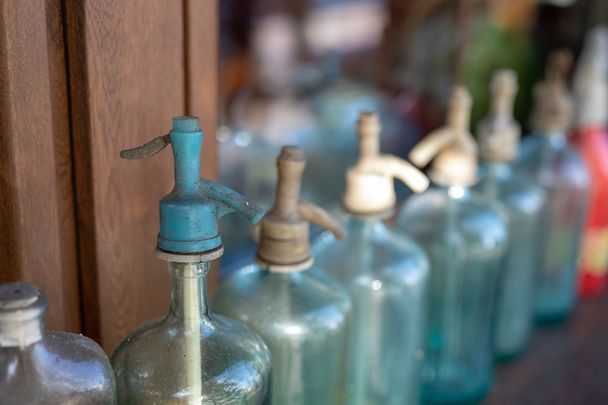How soda water, Irish sounding-brand names and all, become a medical, emotional and spiritual part of the 19th-century community.
Today, sparkling water is a trendy alternative to sugary sodas in our health-conscious culture. Nearly 800 million liters of soda water are expected to sell annually.
However, sparkling water isn’t anything new. According to researcher Meredith B. Linn, Irish famine immigrants in the 19th century were huge fans of the beverage.
Archaeologists have discovered numerous soda water bottles at the former dwellings of 19th-century Irish immigrants, Linn revealed in the paper "Elixer of Emigration:Soda Water and the Making of Irish Americans in Nineteenth-Century New York City", published by the Society for Historical Archaeology. Her study focused on findings from Five Points, a working-class neighborhood in New York City during the 19th century.
A substantial number of these bottles were found at the site of two tenements inhabited almost exclusively by Irish immigrants and first-generation Irish Americans. The number of bottles found greatly exceeded the number of similar bottles found in association with German, German Jewish, and Polish immigrant residents at the same site and those found in association with Scottish, English and American-born families in Greenwich Village. This pattern was consistent with what was found in Irish immigrant-related sites in New Jersey and San Francisco around the same time period.
JSTOR Daily reports that Irish immigrants, who were “steeped in water remedy beliefs,” viewed soda water as a health-related drink.
“Historical records and oral histories indicate that Irish people generally had faith in apothecaries that was equal to or exceeded that which they had in physicians,” says Linn.
Irish immigrant communities were susceptible to disease. In response to the potato famine, many immigrants survived crossings in filthy steerage compartments to come to the U.S. Their immune systems were depleted and many suffered from diseases such as tuberculosis, cholera, and anemia.
JSTOR Daily reports: “Soda water soon morphed into a symbol of national pride. In response to their new clientele, soda water bottlers began to sell water in bottles embossed with Irish-sounding brand names. These clever strategies meant that Irish people not only bought more water but saved bottles for reuse at home, often filling them with homemade remedies when the soda water was gone. It became common to keep Irish-named soda bottles on display in the home and share soda water with visitors—a ritual that in turn ‘would have been absolutely critical for the survival of most immigrants and constituted a kind of social medicine.’”
Irish immigrants would come to have a medical, emotional, and spiritual connection to the sparkling drink.
According to Linn: “Soda water was a commodity that resonated with Irish immigrants on multiple levels, and one that they actively used to remedy physical, emotional, social, and economic ills resulting from diaspora and emigration.”
* Originally published in 2016, updated in 2025.




Comments